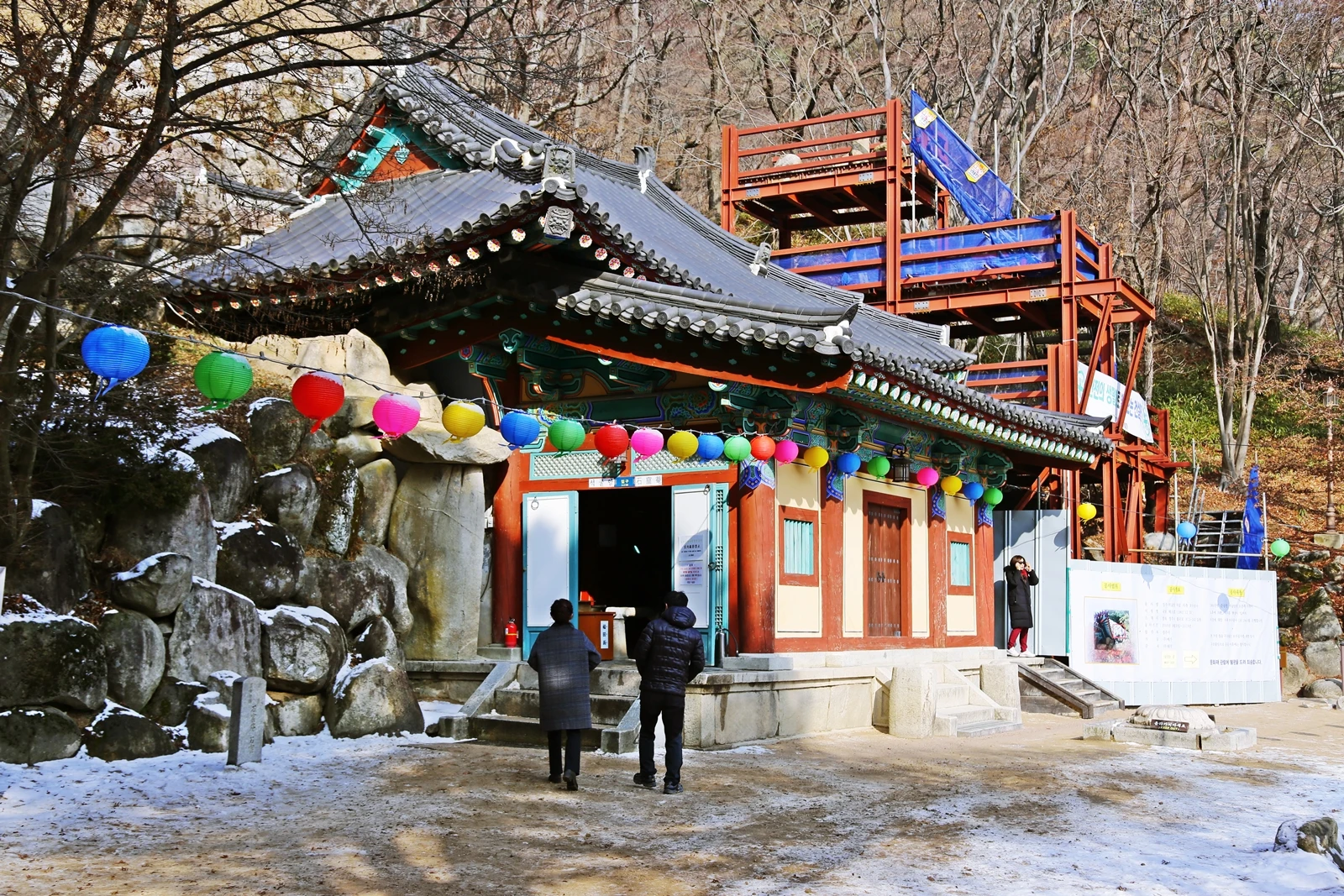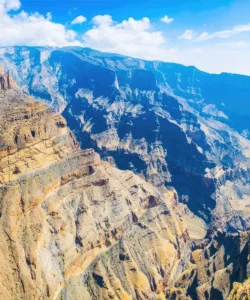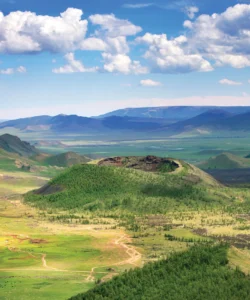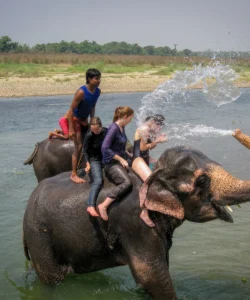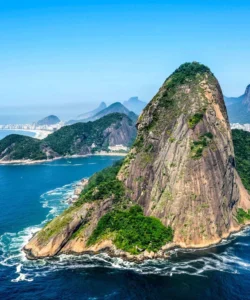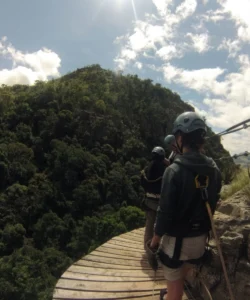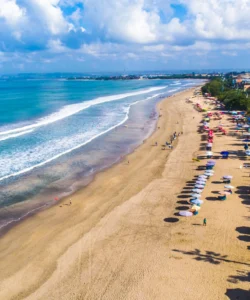Seokguram Grotto (석굴암; 石窟庵) is a magnificent Buddhist rock temple located on the eastern peak of Mount Tohamsan in Gyeongju, South Korea. Created in the 8th century during the Unified Silla Kingdom, it is renowned worldwide as a pinnacle of classical Buddhist art and a marvel of ancient engineering. The grotto and the nearby Bulguksa Temple are collectively designated as a UNESCO World Heritage site, celebrated for their exceptional artistic achievements and profound spiritual significance.
Listen to an introduction about Seokguram Grotto
![]()
Name: Seokguram Grotto (석굴암; 石窟庵)
Address: 870 Bulguk-ro, Gyeongju-si, Gyeongsangbuk-do, South Korea. It is located near the peak of Mount Tohamsan, a short drive or hike from Bulguksa Temple.
How to get there:
Seokguram Grotto is typically visited in conjunction with Bulguksa Temple, as a combined journey:
- From Bulguksa Temple: Take public bus 12 from the bus stop in front of Bulguksa Temple’s main entrance. The bus ride up the winding mountain road takes about 15-20 minutes. Alternatively, a taxi ride is quicker. For the adventurous, there’s a hiking trail from Bulguksa to Seokguram (approx. 2.5-3 km, uphill).
- From Gyeongju Bus Terminal/Station: First, take a bus to Bulguksa Temple (Buses 10, 11, or 700), and then transfer to Bus 12 for Seokguram.
- Organized Tour: Many tours of Gyeongju’s historical sites include both Bulguksa Temple and Seokguram Grotto.
- Taxi: A taxi directly from downtown Gyeongju to Seokguram takes about 30-40 minutes.
Landscape and Architecture:
Seokguram Grotto is a marvel of artificial cave construction, designed to house a sublime Buddha statue within a harmonious, symbolic space:
- Artificial Grotto Construction: Unlike natural caves, Seokguram is an artificial grotto, meticulously constructed from granite blocks to resemble a natural cave. This engineering feat, building a domed rotunda with a circular main chamber, is incredibly impressive for its time (8th century).
- Main Rotunda and Ante-chamber: The grotto consists of two main sections: a rectangular antechamber and a circular main rotunda, connected by a short passageway.
- Main Seated Buddha: At the center of the main rotunda sits the magnificent main Bodhisattva statue of Sakyamuni Buddha (National Treasure No. 24). Carved from a single piece of granite, this serene Buddha (3.5 meters tall) is in the bhumisparsha mudra (earth-touching gesture), symbolizing enlightenment. Its perfect proportions and tranquil expression are considered a pinnacle of Buddhist art.
- Guardian Figures and Bodhisattvas: The walls of the grotto are adorned with exquisitely carved stone reliefs of various Buddhist figures:
- The antechamber features the Eight Guardian Deities (Palbusin) and the Vajrapani (Geumgangyeoksa), powerful protectors.
- The circular main chamber features ten Bodhisattvas and Disciples carved in relief along its walls, each with unique expressions and postures, and at the rear, a magnificent Eleven-faced Avalokiteshvara Bodhisattva.
- The dome ceiling of the rotunda once featured intricate carvings of celestial beings, though some have been lost over time.
- Water Management System: Ancient engineers incorporated a sophisticated system to control humidity and condensation within the grotto, using groundwater from the mountain behind it. While modern conservation efforts have introduced air conditioning to further protect the interior, the original design was remarkably advanced.
- Natural Setting: The grotto is discreetly built into the mountainside, offering a secluded and spiritual atmosphere. The exterior is relatively unassuming, hiding the artistic treasures within.
What makes it famous:
Seokguram Grotto is famous for:
- UNESCO World Heritage Site: Designated in 1995 along with Bulguksa Temple, it is recognized for its unparalleled artistic and architectural achievement, representing the zenith of Buddhist art in the Unified Silla Kingdom.
- Masterpiece of East Asian Buddhist Art: The main Buddha statue and the surrounding relief carvings are considered some of the finest examples of Buddhist sculpture in East Asia, known for their sublime beauty, technical perfection, and spiritual depth.
- Ancient Engineering Marvel: The construction of an artificial granite grotto on a mountain slope, designed to protect intricate sculptures and maintain a stable internal environment, showcases the advanced engineering capabilities of the 8th-century Silla Kingdom.
- Symbol of Silla Kingdom’s Golden Age: It reflects the flourishing of Buddhist culture and royal patronage during the Unified Silla period, a time of significant artistic and scientific advancement in Korea.
- Spiritual Significance: It remains a deeply sacred site for Buddhist pilgrims, offering a powerful spiritual experience in a serene setting.
Differences from some other wonders:
Seokguram Grotto stands out from other temples and artificial caves due to its specific characteristics:
- Artificial Grotto vs. Natural Cave: Unlike many cave temples (e.g., Ajanta or Ellora Caves in India) that are carved into natural rock formations, Seokguram is a completely artificial grotto, built entirely from precisely cut granite blocks. This pre-planned, constructed nature is a testament to Silla’s architectural and engineering prowess.
- Integrated with Bulguksa Temple: Its designation as a joint UNESCO site with Bulguksa Temple highlights a unique relationship. While Bulguksa is a vast, open temple complex, Seokguram is an intimate, enclosed grotto, both designed by the same person (Prime Minister Kim Dae-seong) and intended to represent different aspects of the Buddhist cosmos. This complementary pairing is highly distinctive.
- Iconic Single Buddha as Focal Point: While many cave temples feature multiple statues and elaborate halls, Seokguram’s design is specifically centered around the singular, perfectly proportioned main Sakyamuni Buddha, surrounded by a carefully curated pantheon of relief carvings. The entire grotto is essentially a perfect setting for this one supreme figure.
- Sophisticated Climate Control (Ancient and Modern): The original design’s ingenuity in managing moisture through natural ventilation and water channels was remarkably advanced. Its ongoing need for modern climate control to preserve its delicate interior (resulting in viewing limitations for visitors) also makes it unique, highlighting the challenges of preserving ancient artistic masterpieces in specific environments.
- Sublime Artistic Harmony: The grotto’s fame rests not just on its individual sculptures but on the harmonious unity of its architecture, sculpture, and natural setting, creating a space that evokes profound spiritual contemplation through artistic perfection. This overall aesthetic cohesion is often cited as a unique feature.
In essence, Seokguram Grotto is a rare and precious masterpiece, a convergence of spiritual devotion, artistic genius, and ancient engineering, offering a uniquely profound and beautiful experience of Buddhist heritage.
